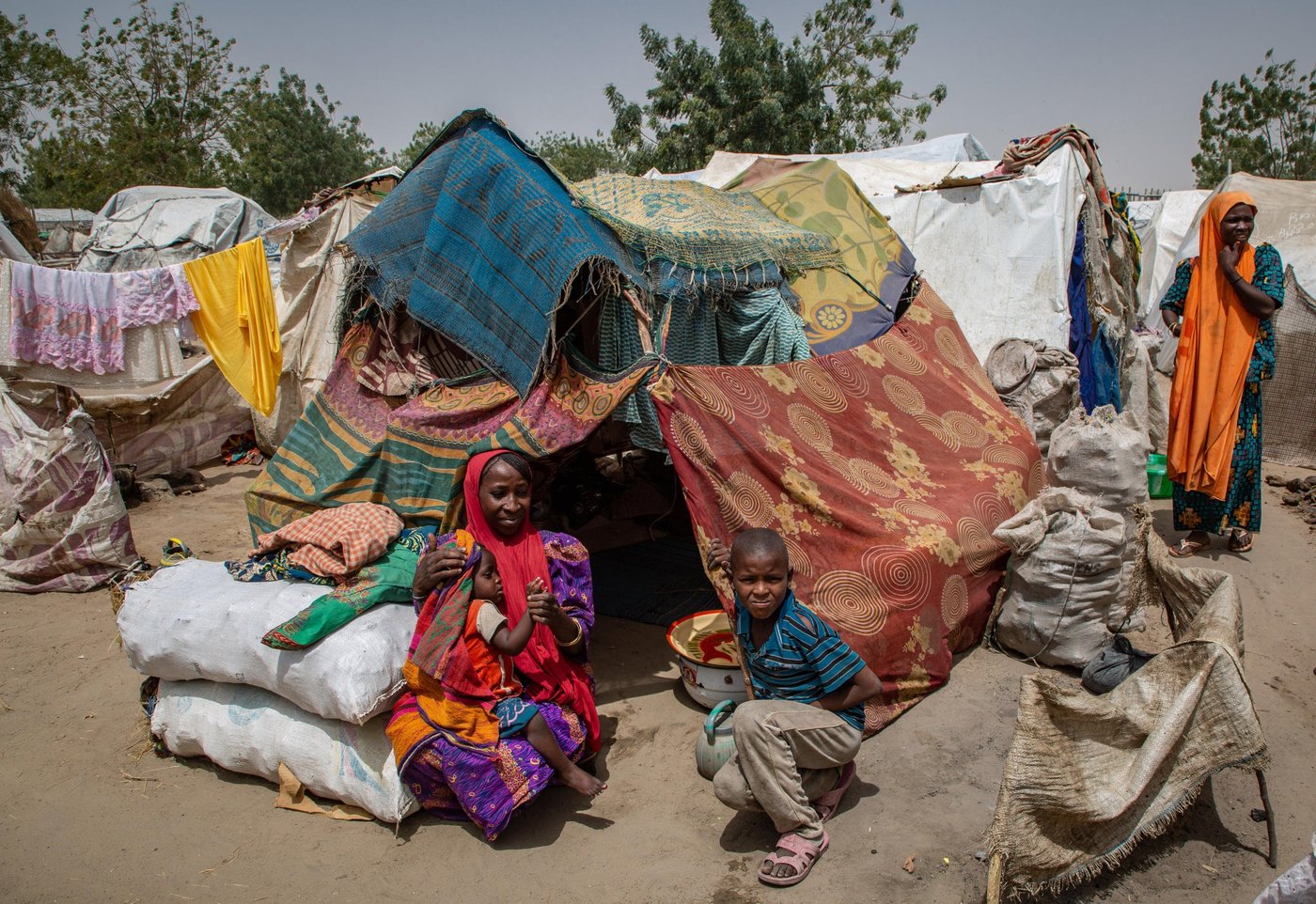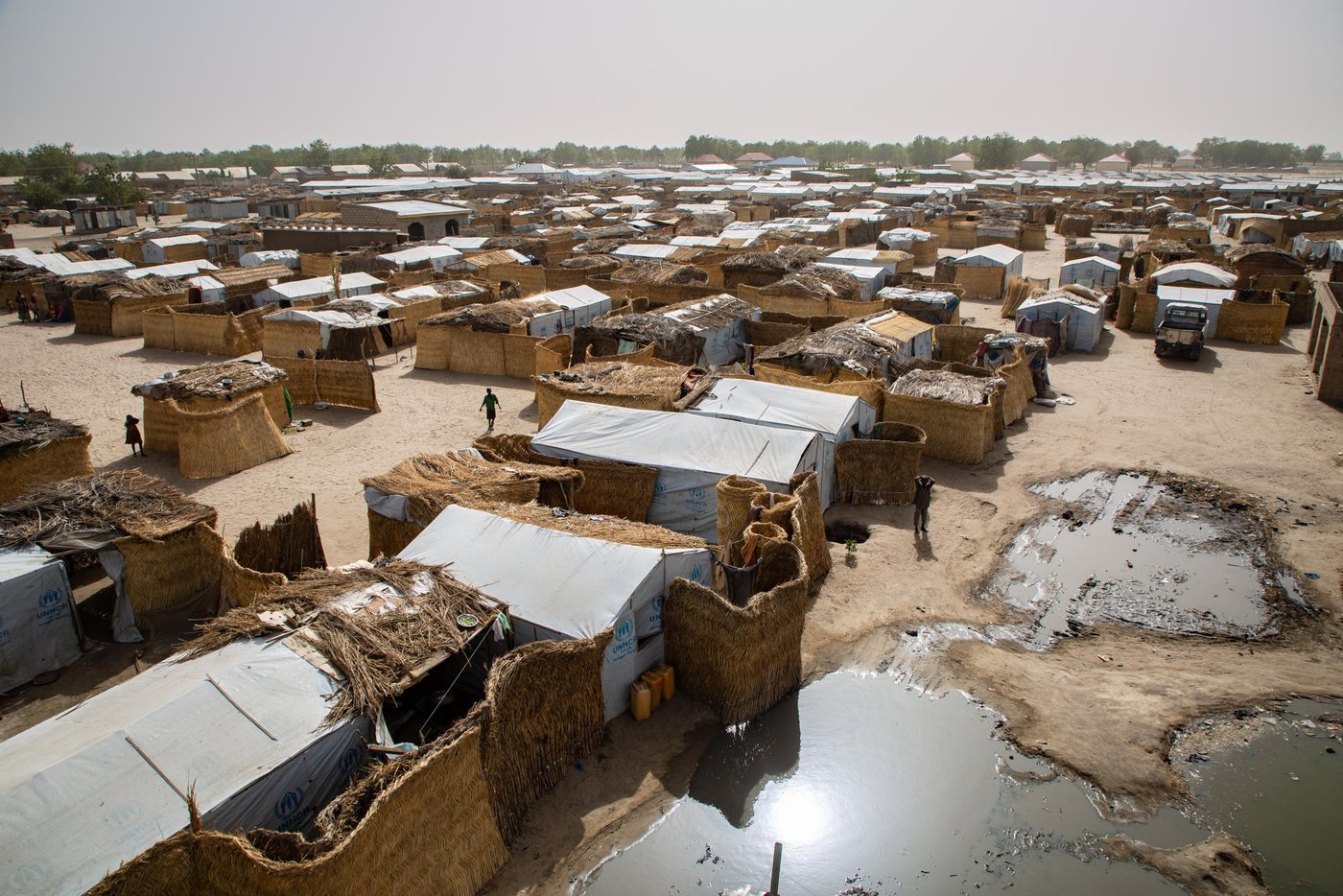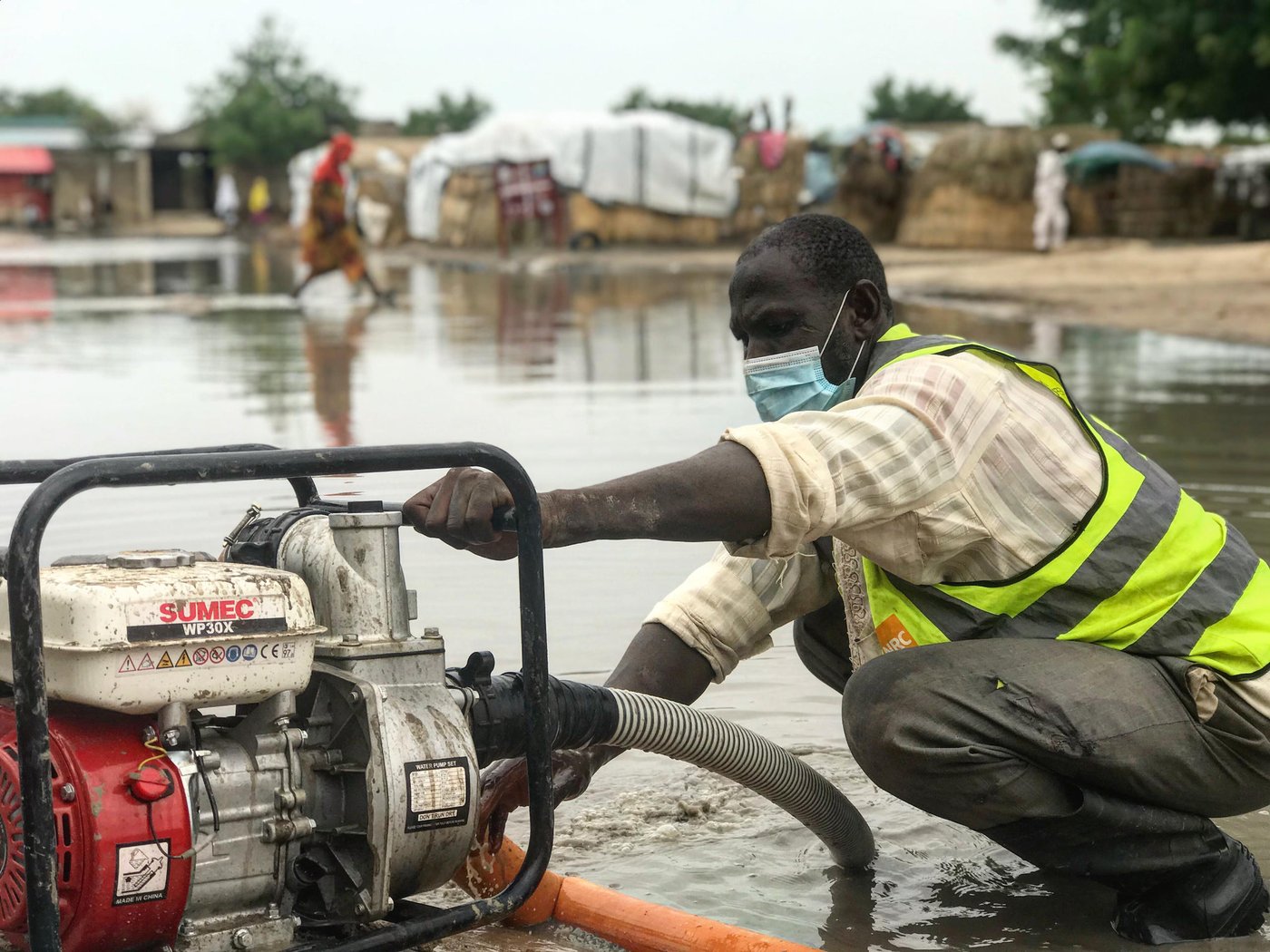In Al Yacub camp, the heavy rains and wind of the previous week swept the latrines away. The entire structure, made of sheet metal, tipped over and collapsed in a large puddle of mud.
In Kawar Maila camp, a big tree was uprooted and toppled over, destroying shelters in its fall.
These informal settlements are extremely exposed to the harsh weather conditions of north-east Nigeria. The shelters, often improvised constructions of straw, sticks, cloth and metal sheeting, are crammed into small patches of lands. They are left barely standing after the heavy windstorms that hit the region every summer.
Covid-19: an additional threat
North-east Nigeria region has seen over a decade of raging conflict between non-state armed groups and government forces. Civilians have borne the brunt of this uninterrupted violence and, according to the Humanitarian Needs Overview, 1.8 million people remain displaced after being forced to flee their homes.
Last month, the estimated number of people in urgent need of lifesaving assistance in Borno, Adamawa and Yobe states reached 10.6 million according to the Humanitarian Response Plan. This figure represents the highest recorded number of people in need since the beginning of the coordinated humanitarian response in 2015.

It is in this context that the threat of Covid-19 looms. Officially, at least one case of Covid-19 has been detected in 12 displacement sites in the north-east. However, the highly infectious nature of the virus, combined with overcrowding and the prevalence of other diseases, will have serious implications for people in camps.
No space for social distancing
Fatima* is one of the people in need of assistance. She is currently living in an overcrowded displacement camp. A year ago, she tried to go back home, thinking that the situation in her village had stabilised but once there, the insecurity deteriorated again. “[Groups of armed men] could come in the night and do what they want and escape. The next day the army would also come into town and make us feel uncomfortable.”
![“…[The armed men] might come in the night and do what they want and escape and the next day the army would also come into town and make us feel restless…This is the second time I have been displaced, after we left at first the security situation was calm and then we went back to village. The situation deteriorated again and we were forced to leave....During the day we spend the day under the sun, and in the night we spend it in the cold weather. We have no place to go to and we do not know anyone in this town.” Fatima, (real name withheld) a displaced woman in the displacement camp in Monguno..”
Interview conducted on 12 March 2020 in Monguno.
Photo by Tom Peyre-Costa/NRC](/cdn-cgi/image/width=1400,format=auto,fit=crop,height=917/globalassets/images/countries/nigeria/2020/when-the-virus-looms/fatima-1.jpg)
Living in forced displacement for years, families like Fatima’s have no choice but to settle in overcrowded camps. A quarter of all formal and informal camps in the north-east are drastically overcrowded, leaving only 3 to 15 square meters of liveable surface per person. This is three times lower than the minimum humanitarian standards.
Security concerns surrounding the camps limit the space available for dwellings and basic services such as latrines, boreholes and schools. Displaced communities in camps are left with no choice but to share communal shelters, or sometimes sleep in the open.
“During the day we are under the sun, then we spend the night in cold weather. We have no place to go to and we do not know anyone in this town,” says Fatima.
Practicing proper social distancing and regular handwashing in these unsanitary and congested conditions is unrealistic. Urgent measures to decongest overcrowded camps are desperately needed.

Cycle of disaster
Beyond jeopardising the fight against Covid-19, the congestion in camps plunges displaced people in a cycle of hazards and disasters. All year round, the safety, dignity and privacy of residents are frequently compromised, especially for women and girls who are at risk of gender-based violence.
Every year, deadly fires devastate camps in the spring at the peak of the hot season. The rainy season that follows brings along a high risk of flooding and damage to homes and infrastructure, as well as outbreaks of malaria and waterborne diseases like cholera. Within the last few weeks alone, rainstorms left hundreds of shelters flooded or even destroyed. Paths and streets within the camps have turned into large mud pools, limiting movements for the elderly and those with a disability. Stagnant and brown water accumulating next to latrines or water points can quickly be contaminated and carry deadly diseases.
The humanitarian response to the coronavirus crisis is more challenging than ever. Most importantly, more space is desperately needed to relocate shelters away from flood-prone areas and tackle overcrowding, whilst battling to limit the risk of Covid-19.

*Name changed for protection reasons
Support our global coronavirus response
No space to live (briefing paper)
Waiting for cholera season (briefing paper)


